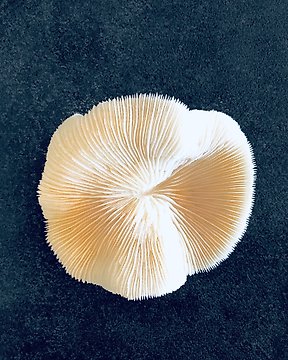
White coral fungia scutaria Coral - Fungia scutaria (No Reserve Price)
No. 67235325

No. 67235325

Fayum portrait of a young man.
Dimensions: 21.5 x 42 x 0.3 cm
Comes with report made by archaeologist Luis Manuel Gonzálvez in 2002.
During the first through the third century A.D., a unique art form — the mummy portrait — flourished in Roman Egypt. Stylistically related to the tradition of Greco-Roman painting, but created for a typically Egyptian purpose — inclusion in the funerary trappings of mummies — these are startlingly realistic portraits of men and women of all ages.
After the battle of Actium and the death of Cleopatra VII (30 B.C.), Egypt became part of the Roman Empire. The importance of the new province was expressed by its special status as the personal estate of the emperor, ruled by a prefect. Rome's interest in Egypt was, to a large degree, economic: the fertile lands along the Nile were capable of producing a rich surplus of foodstuffs, especially grain, that became essential in feeding the populace of the city of Rome. Moreover, the port of Alexandria exported Egypt's manifold manufactured goods, such as papyrus, glass, and other luxury articles, while the Nile and the desert routes linking it with the Red Sea provided trade connections with inner Africa, the Arabian peninsula, and India. Egypt's deserts also furnished a great variety of minerals, ores, and hard stones. The beneficiaries of such advantageous economic conditions were — for a while, at least — not only the Roman rulers but also a rich upper class of landowners and merchants in Egypt itself, consisting of a complex mixture of indigenous Egyptians and descendents of people from countries all around the eastern Mediterranean who had settled in the Nile Valley and oases (such as the Fayum) during the rule of the Ptolemies (332-30 B.C.).
The truly multicultural population, especially in the cities of Roman Egypt, provided a fertile ground for phenomena such as the painted panel portraits on mummies. In their artistic style and technique, the portraits on wood panels followed the Greek painting tradition of depicting the subject in three-quarter view, with a single light source casting realistic shadows and highlights on the face. Indeed, since practically no panel paintings from the Greek world have been preserved, the mummy portraits — conserved by Egypt's arid climate — are the only examples of an art form that ancient literary sources place among the highest achievements of Greek culture. Besides style and technique, the clothing, hairstyles, and jewelry worn by the individuals represented in the panel portraits display fashions that were prevalent in the whole Roman Empire — most likely under strong influences from the imperial court at Rome — but also incorporating special eastern Mediterranean idiosyncrasies, such as a profusion of curls in some of the female hairdos. None of these styles and fashions had any connection with traditional Egyptian customs. In short, taken by themselves, the encaustic panel portraits appear to have no links with Pharaonic Egypt.
Seen in their original context, however, the character of the painted portraits changes. Placed over the faces and fastened into the linen wrappings of Egyptian mummies, the portraits demonstrate clearly that the seemingly Greco-Roman individuals represented in the paintings adhered to traditional Egyptian beliefs about the afterlife. Strong ties to the traditional Pharaonic religion can also be deduced from the popularity of Hawara as a burial place for panel portrait mummies. This site, at the entrance to the Fayum oasis, was the place of the pyramid and mortuary temple of the Middle Kingdom Pharaoh Amenemhat III (ca. 1844-1797 B.C.). Greek authors called the temple the "labyrinth," describing statues of "monsters" — that is, crocodile and other animal-headed deities — still standing in their chapels in the first century A.D. The wish to be buried in such a place signals not only veneration of Egyptian deities, but a deep-seated need for a connection to the traditional religion and culture.
The term encaustic designates painting in which beeswax is mixed with pigments. The technique was first used by Greek painters of the fifth and fourth centuries B.C. Ancient descriptions are difficult to interpret, and Egyptian mummy portraits--the only works in the medium surviving from antiquity--have not yet been analyzed extensively. Therefore, many questions concerning the details of the techniques used by mummy-portrait painters remain open, although the work of a few scholars and modern artists who paint in encaustic has provided some insight.
Purchased by the current owner in 2001 in London from an ancient art gallery (C.J.), previously owned before 70's.
Provenance: The Supplier warrants that he obtained this lot legally. Provenance statement seen by Catawiki. Important information. The seller guarantees that he is entitled to ship this lot. The seller will take care that any necessary permits will be arranged. The seller will inform the buyer about this if this takes more than a few days.
Important: For destinations out of Spanish territories: all our objects will be shipped after obtaining CERTIFICATE OF EXPORTATION by Ministry of Culture of Spain. We inform our clients that it may take between 4-8 weeks.
How to buy on Catawiki
1. Discover something special
2. Place the top bid
3. Make a secure payment